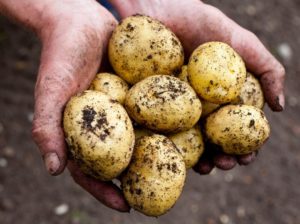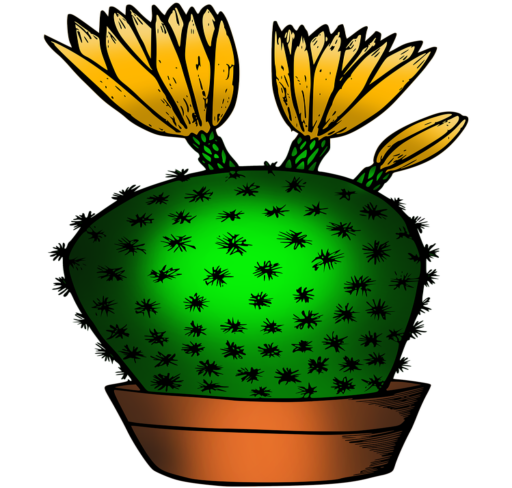Planting Potatoes

Plant potatoes directly in the vegetable garden as soon as possible after you receive your mini-tubers. Potatoes are a cool season crop and mini-tubers should be planted prior to the last expected frost in spring if possible. Potatoes may also be grown as a fall crop in milder regions.
Select a location in full sun with good rich moist organic soil. Make sure you did not grow tomatoes, peppers, eggplant or potatoes in the bed the previous year to avoid disease problems. Potatoes prefer a soil pH of 4.8 to 6.0. Avoid poorly drained soils. Do not plant potatoes in freshly turned grass sod to avoid wireworms.
Preparing the Soil
Prepare the bed by turning the soil under to a depth of 8 inches. Level with a rake to remove clumps of grass and stones.
Plant the entire mini-tuber, do not cut it up into smaller pieces. Lay the mini-tuber in a trench 4-5 inches deep and 6-8 inches wide and apply a light fertilizer at the bottom of the trench. Space the potatoes 10 to 12 inches apart with eyes up and cover with 2 or 3 inches of soil in rows spaced 2 feet apart.
If there is danger of frost cover the rows with newspaper until the shoots are 3-4 inches tall or the danger of frost is over. Plants emerge in 4-6 weeks.
When plants are about 5 inches tall, hill up the soil from the sides of the trench around each plant almost covering the foliage, but allowing 2 inches of foliage to remain above the soil.
Continue this hilling process as the plants grow, usually about every two weeks. The hills keep the plants cool. Prevent the potatoes from forming near the surface where light will cause the tubers to turn green and become poisonous. Hilling suppresses weeds and keeps roots deep in the soil where more moisture is available.
How to Grow Potatoes
Keep weeds under control during the growing season. Weeds compete with plants for water, space and nutrients. Control them by either cultivating often or use a mulch to prevent their seeds from germinating. Cultivate carefully so as not to bruise or cut the young tubers forming just below the soil.
It is important to keep plants well watered during the growing season to ensure enough water for potato development. They prefer 1-2 inches of water per week, more during hot, dry spells. Use a rain gauge to check to see if you need to add water. Water with a drip or trickle system that delivers water at low pressure at the soil level. Keep the soil moist but not saturated.
In areas with sandy soil additional side dressings of fertilizer may be needed when the plants are about 12 inches tall and flowers first begin to appear.
Monitor for Pests and Diseases
Check with your local Cooperative Extension Service for pest controls recommended for your area.
Potato hills can be bordered with rows of other cool-season vegetables such as cabbage transplants, direct-sown lettuce, celery, salad greens and root crops, onions, overwintered herbs, nasturtiums, and strawberry plants.
Harvesting and Preserving Tips for Potatoes

Harvest “new potatoes” as soon as plants begin to flower, about 10 weeks after planting. Harvest mature potatoes about 15 weeks after planting.
Dig mature potatoes for storing 2-3 weeks after the plants turn yellow and die back. Use a spading fork and work from the outside edge of each row, turning the soil over carefully so the potatoes are not damaged. Most of the crop will be in the top 6 inches of the soil. Harvest on a sunny day and leave them out to dry for an hour.
After harvesting store them in a dark, dry place for a week at 65-70 degrees F. Then store them at 35-40 degrees F out of the light.
Note: The leaves of potato plants are poisonous to humans and animals.
